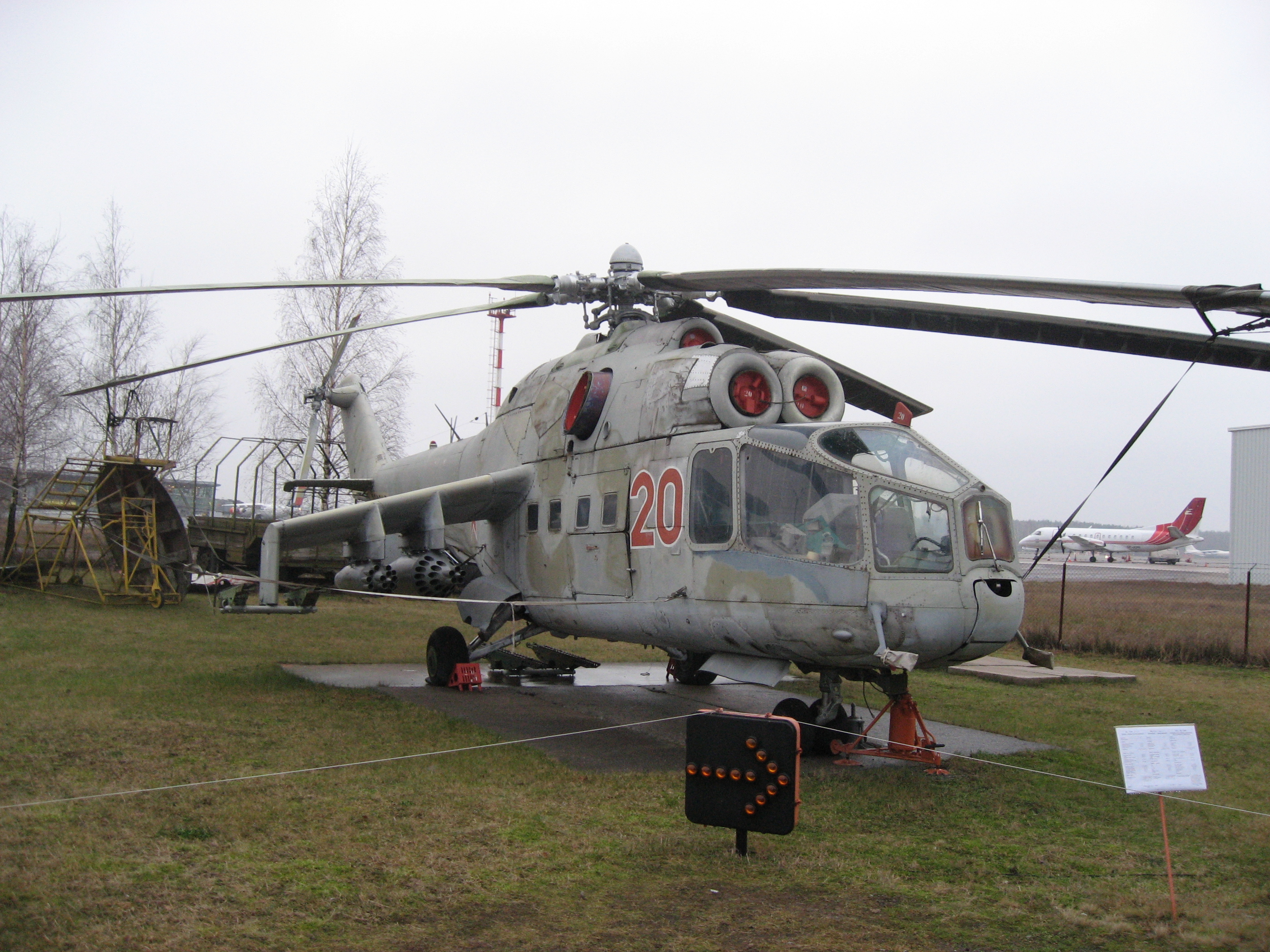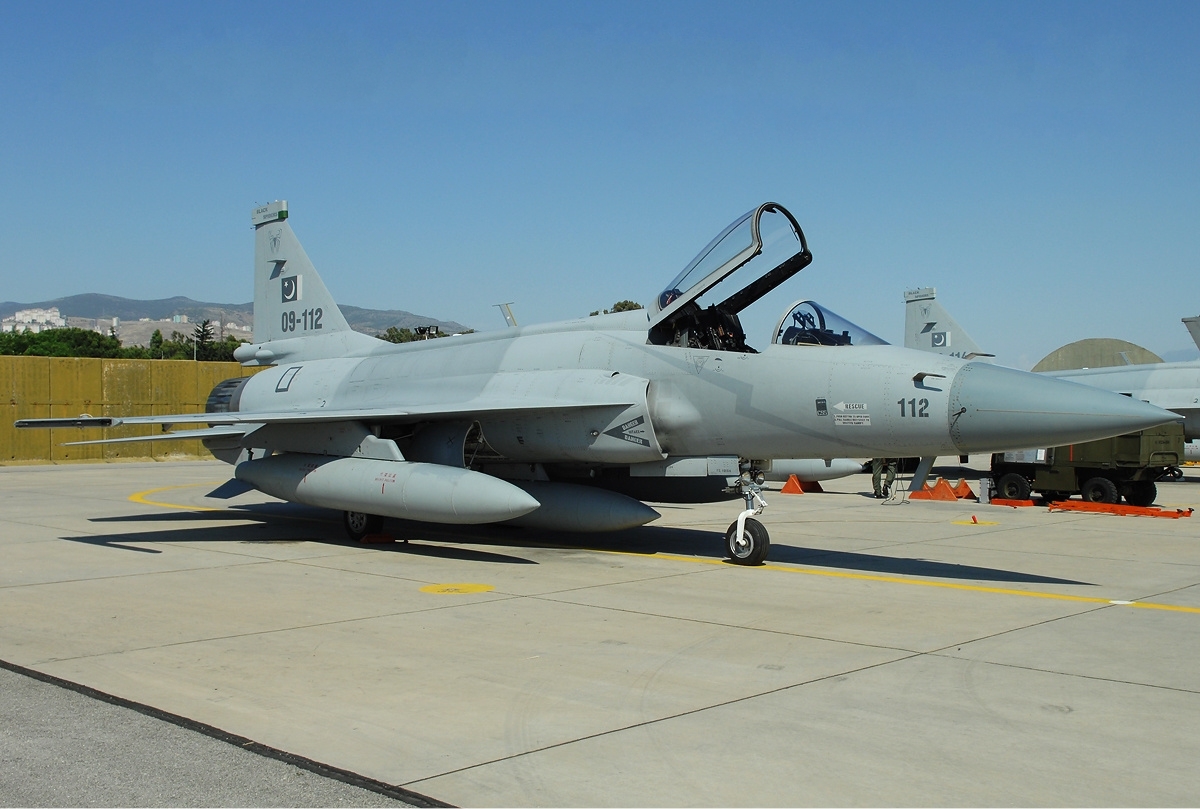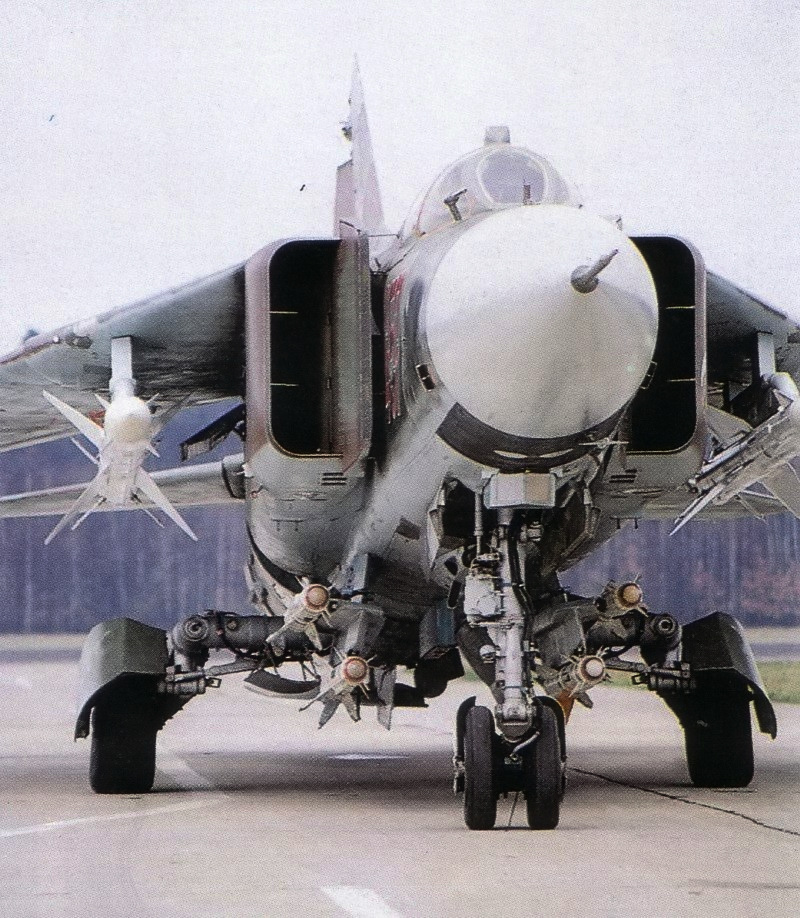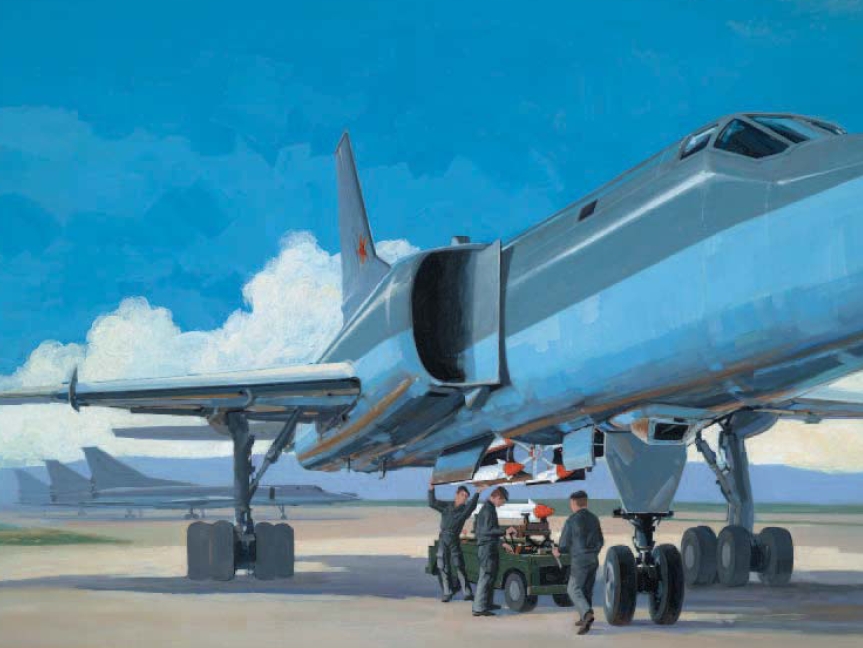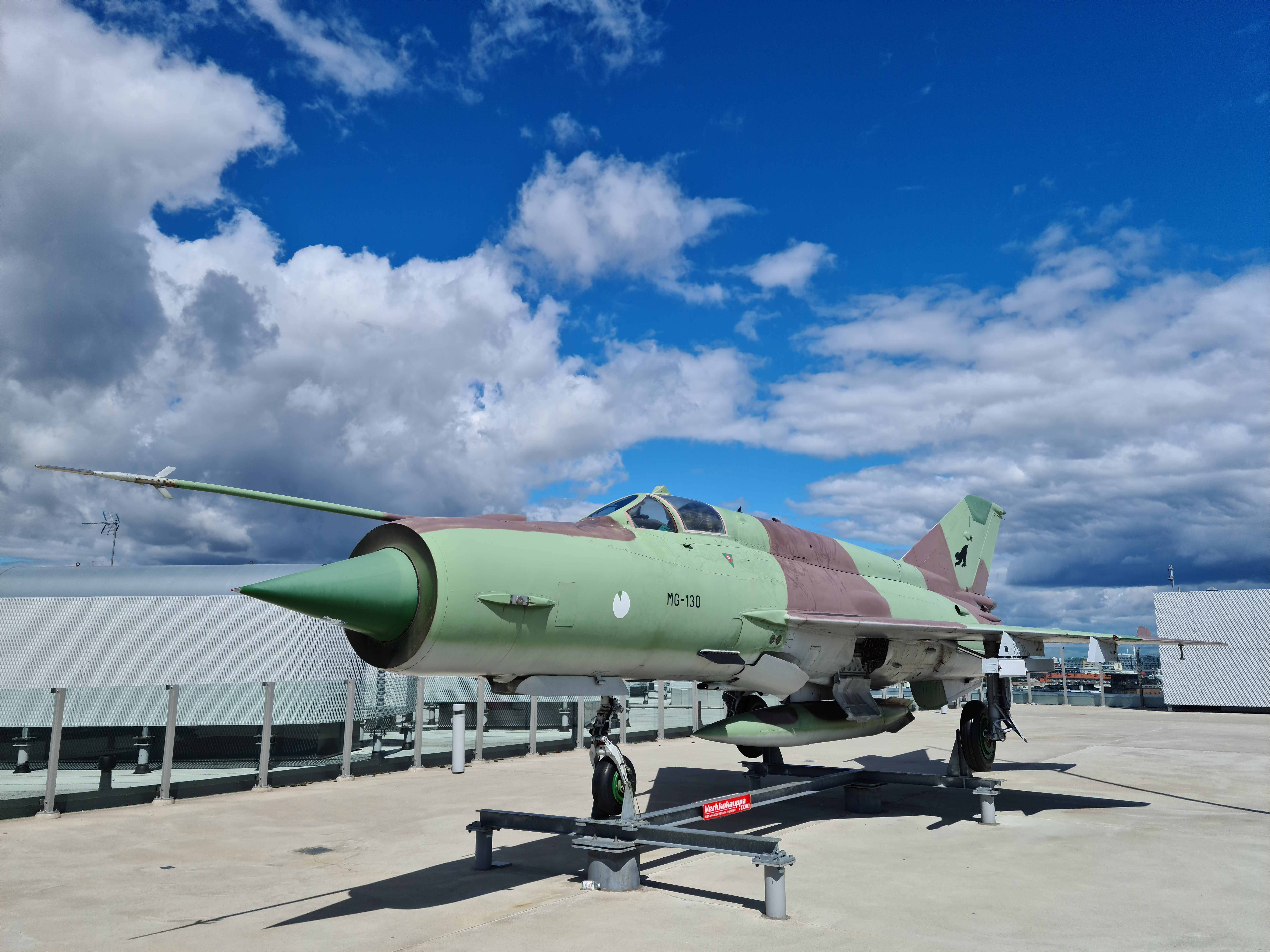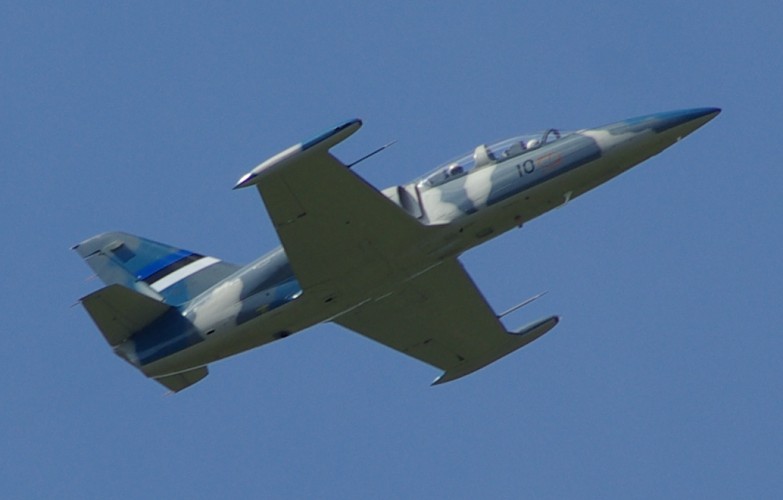|
GSh-23
The Gryazev-Shipunov GSh-23 () is a twin-barreled 23 mm autocannon developed in the Soviet Union, primarily for military aircraft use. It entered service in 1965, replacing the earlier Nudelman-Rikhter NR-23 and Rikhter R-23. The GSh-23 works on the Gast gun principle developed by German engineer Karl Gast of the Vorwerk company in 1916: it is a twin-barreled weapon in which the firing action of one barrel operates the mechanism of the other. The Gast principle provides a much faster rate of fire for lower mechanical wear than a single-barrel weapon. It cannot match the sustained rate of fire of an electrically operated multi-barrel rotary cannon such as the M61 Vulcan, but does not require an external power source, being powered by the recoil of the floating barrels, somewhat like the action of the German MG-42. The Gast principle has been little used in the West, but was used on a variety of weapons in the Soviet Union. The cannon comes in a basic GSh-23 variant, and t ... [...More Info...] [...Related Items...] OR: [Wikipedia] [Google] [Baidu] |
Mi-24
The Mil Mi-24 (; NATO reporting name: Hind) is a large helicopter gunship, attack helicopter and low-capacity transport helicopter, troop transport with room for eight passengers. It is produced by Mil Moscow Helicopter Plant and was introduced by the Soviet Air Forces, Soviet Air Force in 1972. The helicopter is currently in use by 58 countries. In NATO circles, the export versions, Mi-25 and Mi-35, are denoted with a letter suffix as "Hind D" and "Hind E". Soviet pilots called the Mi-24 the "flying tank" (), a term used historically with the famous World War II Soviet Ilyushin Il-2#"The Flying tank", Il-2 ''Shturmovik'' armored ground attack aircraft. Other common unofficial nicknames were "Galina" (or "Galya"), "Crocodile" (), due to the helicopter's camouflage scheme, and "faceted glass, Drinking Glass" (), because of the flat glass plates that surround earlier Mi-24 variants' cockpits. Development During the early 1960s, it became apparent to Soviet designer Mikhail Mil th ... [...More Info...] [...Related Items...] OR: [Wikipedia] [Google] [Baidu] |
CAC/PAC JF-17 Thunder
The CAC/PAC JF-17 Thunder (), or FC-1 ''Xiaolong'' (), is a fourth-generation, lightweight, single-engine, multirole combat aircraft developed jointly by the Pakistan Aeronautical Complex (PAC) and Chengdu Aircraft Corporation (CAC) of China. It was designed and developed as a replacement for the third-generation A-5C, F-7P/PG, Mirage III, and Mirage 5 combat aircraft in the Pakistan Air Force (PAF). The JF-17 can be used for multiple roles, including interception, ground attack, anti-ship, and aerial reconnaissance. The Pakistani designation "JF-17" stands for "Joint Fighter-17", with the "Joint Fighter" denoting the joint Pakistani-Chinese development of the aircraft and the "-17" denoting that, in the PAF's vision, it is the successor to the F-16. The Chinese designation "FC-1" stands for "Fighter China-1". The JF-17 can deploy diverse ordnance, including air-to-air, air-to-surface, and anti-ship missiles, guided and unguided bombs, and a 23 mm GSh-23-2 twin-ba ... [...More Info...] [...Related Items...] OR: [Wikipedia] [Google] [Baidu] |
MiG-23
The Mikoyan-Gurevich MiG-23 (; NATO reporting name: Flogger) is a variable-geometry fighter aircraft, designed by the Mikoyan-Gurevich design bureau in the Soviet Union. It is a third-generation jet fighter, alongside similar Soviet aircraft such as the Su-17 "Fitter". It was the first Soviet fighter to field a look-down/shoot-down radar, the RP-23 Sapfir, and one of the first to be armed with beyond-visual-range missiles. Production started in 1969 and reached large numbers with over 5,000 aircraft built, making it the most produced variable-sweep wing aircraft in history. The MiG-23 remains in limited service with some export customers. The basic design was also used as the basis for the Mikoyan MiG-27, a dedicated ground-attack variant. Among many minor changes, the MiG-27 replaced the MiG-23's nose-mounted radar system with an optical panel holding a laser designator and a TV camera. Development The MiG-23's predecessor, the MiG-21, was fast and agile, but limited ... [...More Info...] [...Related Items...] OR: [Wikipedia] [Google] [Baidu] |
Tupolev Tu-22M
The Tupolev Tu-22M (; NATO reporting name: Backfire) is a supersonic, variable-sweep wing, long-range strategic and maritime strike bomber developed by the Tupolev, Tupolev Design Bureau in the 1960s. The bomber was reported as being designated Tu-26 by Western intelligence at one time. During the Cold War, the Tu-22M was operated by the Soviet Air Forces (VVS) in a missile carrier strategic bombing role, and by the Soviet Naval Aviation (''Aviatsiya Voyenno-Morskogo Flota'', AVMF) in a long-range maritime anti-shipping role. In 2024, the Russian Air Force had 57 aircraft in service, according to the 2024 Military Balance report by International Institute for Strategic Studies. However, in 2023, Ukraine's Main Directorate of Intelligence (Ukraine), Main Directorate of Intelligence estimated that Russia had only 27 aircraft in operable condition. Development In 1962, after the introduction of the Tupolev Tu-22, it became increasingly clear that the aircraft was inadequate in i ... [...More Info...] [...Related Items...] OR: [Wikipedia] [Google] [Baidu] |
HAL Tejas
The HAL Tejas () is an Indian single-engine, delta wing, Multirole combat aircraft, multirole Military aircraft, combat aircraft designed by the Aeronautical Development Agency (ADA) and manufactured by Hindustan Aeronautics Limited (HAL) for the Indian Air Force (IAF) and the Indian Navy. Tejas made its first flight in 2001 and entered into service with the IAF in 2015. In 2003, the aircraft was officially named 'Tejas'. Currently, Tejas is the smallest and lightest in its class of supersonic fighter jets.'' '' Tejas is the second jet powered combat aircraft developed by Hindustan Aeronautics Limited, HAL, after the HAL HF-24 Marut, HF-24 Marut. The first Tejas squadron became operational in 2016. The No. 45 Squadron IAF (''Flying Daggers'')'','' based at Sulur Air Force Station (AFS) in the southern Indian state of Tamil Nadu, was the first to have their MiG-21 ''Bisons'' replaced with the Tejas. Tejas has three production variants - Mark 1, Mark 1A and a trainer/light attack ... [...More Info...] [...Related Items...] OR: [Wikipedia] [Google] [Baidu] |
Gast Gun
The Gast gun was a German twin barrelled machine gun that was developed by Karl Gast of Vorwerk und Companie of Barmen and used during the First World War. Its unique operating system produced a very high rate of fire of 1,600 rounds per minute. The same principle was later used as the basis for the widely used Gryazev-Shipunov GSh-23L series of Russian aircraft autocannon. Description The weapon combines two barrels into a single mechanism so that the recoil from firing one barrel loads and charges the second. Ammunition feeds into the gun from two vertically mounted cylindrical drums, one on each side. The drums held 180 rounds of German 7.92 mm rifle ammunition, feeding them into the breech using a compressed spring. An experienced gunner could change ammunition drums in a few seconds. The weapon could fire single shots if one side of the mechanism had a problem. The gun's relative lightness at approximately without ammunition led to its airborne use; a telescopic s ... [...More Info...] [...Related Items...] OR: [Wikipedia] [Google] [Baidu] |
MiG-21
The Mikoyan-Gurevich MiG-21 (; NATO reporting name: Fishbed) is a supersonic jet aircraft, jet fighter aircraft, fighter and interceptor aircraft, designed by the Mikoyan, Mikoyan-Gurevich OKB, Design Bureau in the Soviet Union. Its nicknames include: "''Balalaika''", because its planform (aeronautics), planform resembles the balalaika, stringed musical instrument of the same name; "''Ołówek''", Polish language, Polish for "pencil", due to the shape of its fuselage, and "''Én Bạc''", meaning "silver swallow", in Vietnamese language, Vietnamese. Approximately 60 countries across four continents have flown the MiG-21, and it still serves many nations seven decades after its maiden flight. It set aviation records, becoming List of most-produced aircraft, the most-produced supersonic jet aircraft in aviation history, the most-produced combat aircraft since the Korean War and, previously, the longest production run of any combat aircraft. Development Origins The MiG-21 jet figh ... [...More Info...] [...Related Items...] OR: [Wikipedia] [Google] [Baidu] |
IAR 93
The Avioane Craiova IAR-93 Vultur (vulture/eagle) is a twinjet, subsonic, close air support, close support, ground attack aircraft, ground attack and tactical reconnaissance aircraft with secondary capability as low level interceptor aircraft, interceptor. Built as single-seat main attack version or combat capable two-seat version for advanced flying and weapon training, it was developed in 1970s by Romania and Yugoslavia to become more independent from Soviet equipment. The Romanian aircraft were built by Avioane Craiova, I.R.Av. Craiova as IAR-93, and its Yugoslav counterpart by SOKO, Soko as the Soko J-22 Orao. For Romania, the IAR-93 was intended to replace MiG-15s and MiG-17s in the fighter-bomber role. Development On May 20, 1971, Romania and Socialist Federal Republic of Yugoslavia, Yugoslavia signed the governmental agreements for the YuRom R&D programme. The program managers were Dipl. Dr. Engineer Teodor Zamfirescu for the Romanian party and Colonel Vidoje Knežević for ... [...More Info...] [...Related Items...] OR: [Wikipedia] [Google] [Baidu] |
Aero L-39 Albatros
The Aero L-39 Albatros is a high-performance jet trainer designed and produced by Aero Vodochody in the Czech Republic. In addition to performing basic and advanced pilot training, it has also flown combat missions in a light-attack role. Despite its manufacturing origin in the Warsaw Pact, the L-39 never received a NATO reporting name. The L-39 Albatros was designed during the 1960s as a successor to the Aero L-29 Delfín, an early jet-powered principal training aircraft. Performing its maiden flight on 4 November 1968, it became the first trainer aircraft in the world to be equipped with a turbofan powerplant. Quantity production of the L-39 Albatros proceeded in 1971; one year later, it was formally recognized by the majority of the Warsaw Pact countries as their preferred primary trainer. Accordingly, thousands of L39s would be produced for various military customers in Eastern Europe. Additionally, it was exported to a range of countries across the world both as a trainer ... [...More Info...] [...Related Items...] OR: [Wikipedia] [Google] [Baidu] |
SOKO J-22 Orao
The Soko J-22 Orao ( sr-cyr, text=Oрао, translation=eagle) is a Yugoslavian/ Serbian twin-engined, subsonic ground-attack and aerial reconnaissance aircraft. It was developed and built in collaboration by SOKO in Yugoslavia and by Avioane Craiova in neighbouring Romania, being known in the latter as the IAR-93 Vultur. The Orao was designed as either a single-seat main attack version or as a combat-capable twin-seat version, the latter being principally intended for advanced flight- and weapons-training duties. It was developed as a joint Yugoslav-Romanian project, known as YuRom, during the 1970s. Early ambitions to produce a supersonic fighter were scuppered by Britain's unwillingness to permit the desired engine to be license-produced in Eastern Europe. Further difficulties in fitting an afterburner to the older Rolls-Royce Viper also hindered development and the performance of early-build aircraft. First flying during November 1974, the resulting aircraft would eq ... [...More Info...] [...Related Items...] OR: [Wikipedia] [Google] [Baidu] |
PZL W-3 Sokół
The PZL W-3 ''Sokół'' (English: "Falcon") is a medium-size, twin-engine, multipurpose helicopter developed and manufactured by Polish helicopter company PZL-Świdnik, now owned by Leonardo. It was the first helicopter entirely designed and produced in Poland. Design The PZL W-3 helicopter design employs a relatively conventional design and construction. It is powered by a pair of Pratt & Whitney Rzeszów-built PZL-10B turboshaft engines; the original powerplant, the PZL-10W, was based on the earlier PZL-10S – a licensed derivative of the Russian-designed Glushenkov TVD-10B turboprop engines which had powered the Polish-built Antonov An-28. Composites are used in the construction of the three-bladed tail and four-bladed main rotors. The rotors have a ice protection system and the helicopter is able to operate in environments between -40 and +43°C. The Sokół has been offered in a number of diverse variants and is capable of performing a typical range of helicopter ... [...More Info...] [...Related Items...] OR: [Wikipedia] [Google] [Baidu] |

